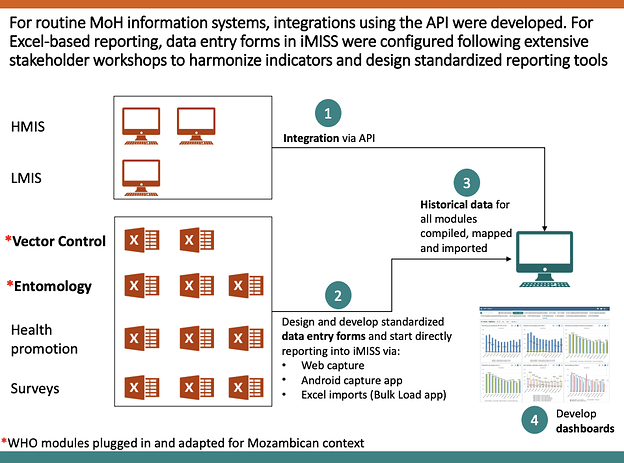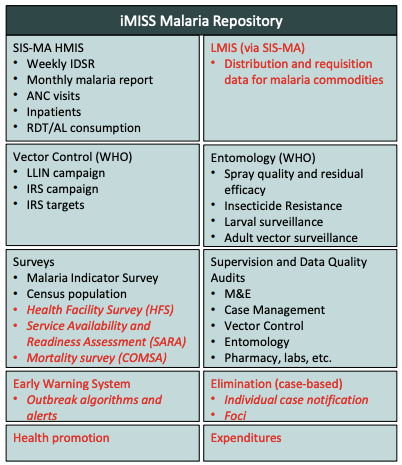Namibia Malaria System
Presented by Iitula Iitula - Insectary manager, National Vector-Borne Disease Control Programme (NMCP), MoHSS Namibia
Download PDF – Watch video recording
Malaria is endemic in the northern part of Namibia.Namibia is pursuing malaria elimination, with improvements in surveillance constituting a core part of the national strategy. The DHIS2 Malaria Information System (MIS) was initially introduced in 2017 to provide a simple mobile-compatible platform for case-based surveillance (notification, investigation and classification), with built-in visualization capabilities and options for future integration
DHIS2 MIS was first rolled out in 2017 for case surveillance, but we have slowly been
adding modules. The system is operational in all the 9 endemic regions of the country. Recently new modules have been added to the system with the latest being the Entomological Surveillance module. So far, the system has >400 users across health facility, district, regional and central levels
Timeline of DHIS2 rollout:
2017/18: Initial roll-out: Health Facility weekly reporting, Case-based surveillance forms
2019 Expanding of modules: Supervision, Vector Control, Community Health Workers
2020/21 Roll-out of Entomological Surveillance module, expansion of Vector Control module
Vector Control Module
Vector control module in the DHIS2 MIS has 5 forms under it, largely reported through the Android Capture app: IRS Weekly District Report, Annual Targets and Insecticide Tracking, Larviciding, LLIN Campaign. By replacing a paper > Excel-based system, the module has substantially improved the program’s ability to monitor campaign progression (Indoor Residual Spray and LLIN distribution) in a timely manner. IRS data is organized into village categories for campaign monitoring purposes. Each village has its own annual IRS target. Scorecard Dashboard easily shows the progress against targets. Mop-up needs are more easily flagged when the campaign progress is far below the set target of 90% per village.
Entomology Module
The Entomology module has been added recently to Namibia’s DHIS2 MIS, and has 6 forms,
largely to be reported using the Android Capture app: Vector Collection, Human Landing Catch, Pyrethrum Spray Catch, Larval Collection, Insecticide Resistance Monitoring, Mosquito PCR Results, and Human Behavior (where people and what they are doing when possibly infected)-- – these data can be combined for analysis with other programs in DHIS2 to analyze and improve effectiveness of work with spraying, net distribution, etc. and forecast to direct response to relevant places.
Historical data stored in MS Excel was imported into the system using user-friendly import apps available on the DHIS2 app store (Data Import Wizard and Bulk Load). With the program moving to use Android Capture, users can accurately capture GPS coordinates while in the field
for mapping purposes. Dashboards allow users to visualize vector composition & distribution, biting behavior, and insecticide resistance.
Successes
Most malaria data has been integrated into a centralized repository, allowing for combined
analysis of case, supervision, vector control, and entomology data. Data review meetings, continuous dashboard iteration & use of descriptive textboxes, and creation of reference sheets with definitions/calculations of Data Elements, Indicators, Program Indicators has slowly improved data interpretation by end users. A series of instance-specific training videos have allowed for easily deployable and decentralized trainings (for refreshers, staff turnover, etc.).
Next Steps
• Continue phased switchover from legacy DHIS2 Android apps to integrated Capture app
• Decentralize Data Review Meetings to regional level to foster the culture of data use at
regional levels
• Upgrade DHIS2 from version 2.29 to the latest version (awaiting full Android switchover due
old Android apps not being compatible with later DHIS2 versions)
• Enhance capacity-building to the Ministry of Health staff in readiness for full transition of
system from partner (CHAI)

